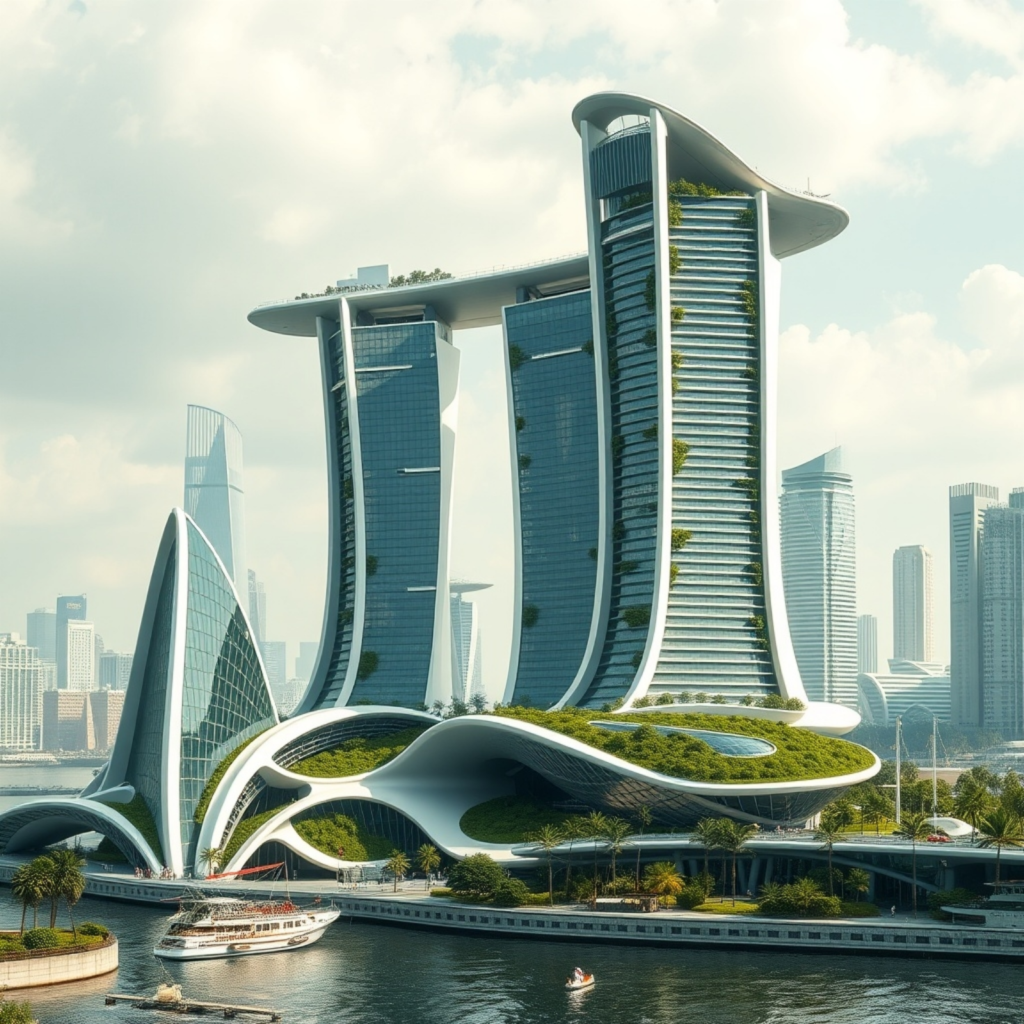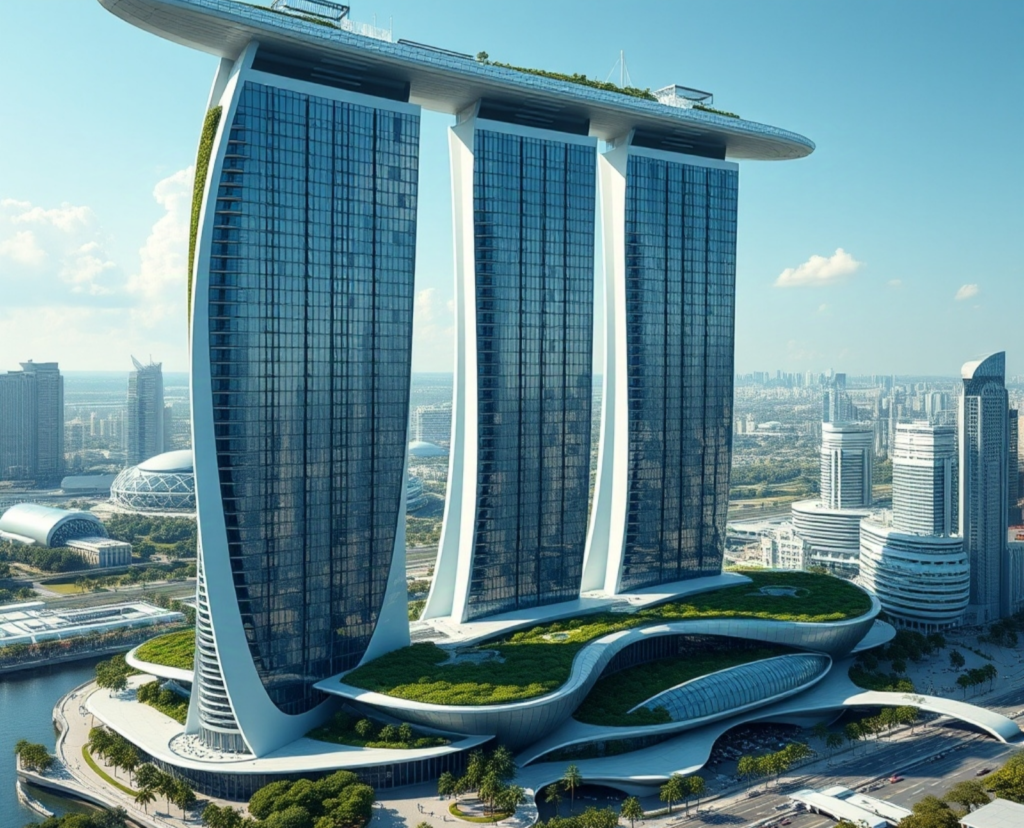

As cities grow and global populations continue to shift towards urban centers, the need for innovative solutions in architecture and urban planning is more critical than ever. Today’s most groundbreaking developments in city planning and building design revolve around the integration of smart technologies, environmental sustainability, and futuristic aesthetics. Smart buildings and smart cities are not just a trend; they are becoming the foundation of future urban landscapes, offering advanced solutions to some of the most pressing challenges of modern living. In this article, we’ll explore how smart cities and smart buildings are redefining urban spaces and what this means for architects, builders, and investors.
The Concept of Smart Cities
A smart city integrates information and communication technologies (ICT) into its infrastructure, services, and management systems to enhance the quality of urban life. These cities are designed to be sustainable, efficient, and responsive to the needs of their residents. The smart city concept focuses on several key elements:
1. Energy Efficiency: Smart cities focus on optimizing energy consumption, using renewable energy sources, and reducing carbon footprints through green building practices.
2. Urban Mobility: Autonomous vehicles, intelligent traffic management systems, and smart public transportation networks are reshaping how people move around urban centers.
3. Digital Connectivity: Ubiquitous high-speed internet access, often through 5G networks, ensures seamless communication between devices, infrastructure, and residents.
4. Sustainability and Resilience: From smart grids to water management systems, smart cities are designed to be adaptable, sustainable, and environmentally conscious.
5. Citizen Engagement: Residents are often given access to real-time data that allows them to participate in and improve urban living conditions through apps and other digital platforms.

Smart Buildings: A Core Component of Smart Cities
Smart buildings are integral to the concept of smart cities. These structures are designed with a focus on energy efficiency, automation, and connectivity. Smart buildings use technology to enhance their operation, optimize resource usage, and create a comfortable and efficient environment for occupants. Key features of smart buildings include:
1. IoT Integration: The Internet of Things (IoT) connects various devices within a building, from lighting to security systems, allowing them to communicate and operate more efficiently.
2. Energy Management: Smart buildings often feature advanced systems that monitor and control heating, cooling, lighting, and water usage to minimize waste and improve sustainability.
3. Automation and AI: From automatic lighting and climate control to security systems that use artificial intelligence (AI) to detect potential threats, automation plays a significant role in making buildings more efficient and secure.
4. Renewable Energy Integration: Solar panels, wind turbines, and other renewable energy sources are becoming a standard feature in smart buildings, reducing their reliance on non-renewable resources.
5. Advanced Materials and Design: Innovative building materials, such as self-healing concrete and responsive facades, help smart buildings reduce maintenance costs while improving environmental performance.

Architectural Marvels: Blending Technology with Design
One of the most exciting aspects of smart buildings is how architects are blending cutting-edge technology with striking designs. The futuristic aesthetics of smart cities reflect the innovation happening behind the scenes. Many modern skyscrapers and urban developments feature sleek, organic shapes that combine form with function. These architectural marvels often incorporate green spaces, sky gardens, and sustainable materials, merging nature with urban life.
Example 1: Vertical Forests
Some smart buildings are embracing the concept of vertical forests, where skyscrapers are covered with greenery to improve air quality, reduce heat absorption, and enhance aesthetics. These vertical gardens not only add a striking visual element but also contribute to the health and well-being of city dwellers by filtering pollutants and producing oxygen.
Example 2: Autonomous Building Systems
Imagine a building that can adjust its lighting and temperature based on occupancy or time of day, or one that can generate its own energy through solar panels and wind turbines. These are no longer futuristic fantasies; they are realities in many smart buildings. The fusion of automation and sustainability is helping to drive down operational costs while reducing environmental impact.

Smart Technology and City Planning: Key Trends
The future of architecture and city planning is deeply intertwined with smart technology. Here are some of the key trends transforming urban spaces:
1. Mixed-Use Developments: Smart city planning often focuses on mixed-use developments that blend residential, commercial, and recreational spaces into cohesive communities. This creates a more dynamic and sustainable urban environment where residents can live, work, and play without the need for extensive commuting.
2. Mobility Solutions: Smart cities are built with intelligent transport systems that utilize electric vehicles, ride-sharing platforms, and autonomous public transit options. These innovations not only reduce congestion but also lower carbon emissions and improve urban mobility.
3. Adaptive Reuse of Buildings: Rather than demolishing older buildings, many smart city planners are focusing on adaptive reuse projects, where existing structures are retrofitted with modern technologies. This not only preserves the historical character of cities but also reduces the environmental impact associated with new construction.
4. Digital Twins: Digital twin technology allows cities to create virtual models of buildings, infrastructure, and entire neighborhoods. These digital replicas can be used for planning, monitoring, and improving city operations, making urban spaces more responsive and efficient.
5. Data-Driven Decision Making: Smart cities are increasingly using data analytics to inform decision-making. Sensors embedded in buildings, roads, and public spaces collect data on everything from traffic patterns to energy consumption, helping city planners make informed decisions about resource allocation and infrastructure improvements.
The Role of Architects, Builders, and Investors
As the demand for smart cities and buildings grows, architects, builders, and investors have an incredible opportunity to shape the future of urban spaces. Architects must consider not only the aesthetic appeal of their designs but also how they can integrate smart technologies and sustainable practices into their buildings. Builders are tasked with adopting new construction techniques and materials that align with the principles of smart city development.
Investors, too, play a critical role. Investing in smart city infrastructure and real estate can provide long-term returns, as cities around the world increasingly prioritize sustainability, technology, and quality of life. From green building projects to smart mobility solutions, the market for smart city investments is expected to grow exponentially in the coming decades.
Conclusion:
A Vision of the Future
Smart cities and smart buildings represent the future of urban living. As technology continues to evolve, the possibilities for innovative and sustainable cityscapes are endless. From AI-powered systems that manage resources to futuristic architecture that pushes the boundaries of design, the future of architecture and city planning is bright. As we look ahead, it’s clear that smart buildings and cities will not only improve the way we live but also create a more sustainable and connected world.
